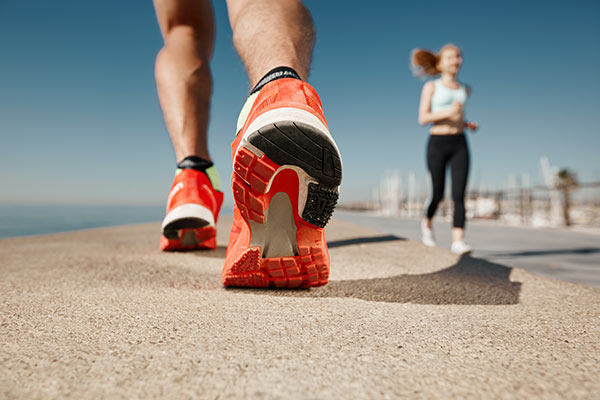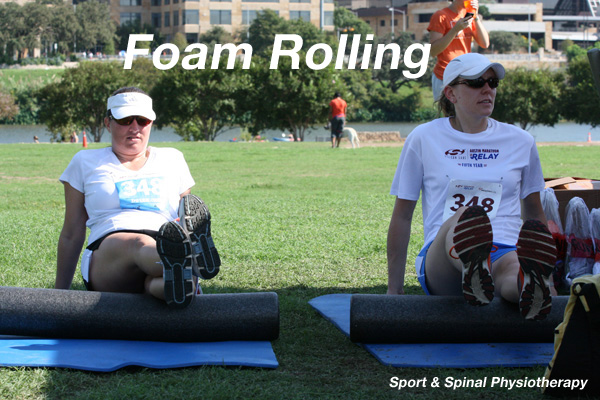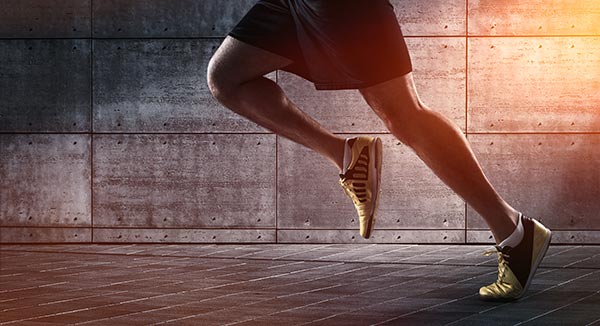13 Ways to Easily Become a Better Runner
Become a better runner with my top 13 tips! I’ve got you covered with training, racing, running technique and race recovery tips to help you become a better runner.
1. Become a Better Runner and Look After Your Feet!
 Whilst running, your feet are the only things that come in contact with the ground (hopefully…). However, from experience in treating many running injuries, most people neglect to look after their feet in training.
Whilst running, your feet are the only things that come in contact with the ground (hopefully…). However, from experience in treating many running injuries, most people neglect to look after their feet in training.
Self massaging the bottom of your feet can help release muscle and fascial tension in the foot. Using a lacrosse ball, golf ball, or tennis ball on the floor, gently roll from the heel to the ball of your foot. T
ry performing this 1-2 minutes on each foot every night. Stretching the big toe and other tendons of the foot can help reduce the stress on different joints, bones and tendons in your foot and decrease your risk of injury.
Strengthening of the small muscles in the foot is also important. We, as a shoe wearing society tend to have weak foot muscles as our feet are cooped up inside shoes all day. We also spend most of the day sitting.
Therefore, these muscles don’t get a chance to move and react to uneven ground (this is how the barefoot running craze started). I don’t suggest you all start barefoot running but there’s many simple exercises you can do to strengthen your feet.
Try placing your foot on a towel on the ground and scrunch your toes to drag the towel in towards you (try repeating this for 30-60 seconds, rest and repeat 2-4 times). Or try swapping over between having your big toe pointing up and other toes pointing down, and then having your big toe down and other toes up! (harder than it sounds for some)
2. Become a Better Runner on Race Day and Finish Quick!
Sprinting at the finish may be more helpful then just fooling the crowd into thinking you’ve been running that fast the whole race. There’s evidence to suggest that your neuromuscular system is most likely to find more efficient ways to move (better technique) when your body is fatigued.
Try end some of your easy runs with a sprint at the end (sort of). At the last 3-5 minutes of a longer run, increase your speed to an exertion level of 6-7/10.
3. Learn how to Breathe Better to Become a Better Runner!
Breathing technique is such a common problem in new or inexperienced runners. It may sound odd, but most long distance runners are breathing too much. By trying to bring in so much oxygen so quickly, you’re not getting rid of all the CO2 in your lungs.
Therefore there’s less space for oxygen to fill the lungs and you’ll limit the available oxygen to your muscle tissue where you need it the most. Slow down your breathing and you may find that running becomes easier.
There’s no one technique that works for everyone but try breathing in and out on every 2 steps (or every time your right foot hits the ground). Your breathing rate will increase or decrease depending on you speed.
4. Improve Your Running Technique and Lose the heavy heel strike
Whilst running you only ever have one foot in contact with the ground at a given time (otherwise its called walking). This repetitive pounding can place a large amount of stress on your joints, bones and muscles. This is even more true for runners who are heavy heel-strikers.
It has been shown that even whilst wearing shoes, heel strikers will place great forces on their rear-foot then a mid foot or forefoot runner, running in bare feet. Not only can this lead to injuries of the foot, ankle and shin but it also slows you down.
If your heel strikes the ground in front of your centre of mass then the ground is pushing back against your foot with a braking force (slowing you down). Just google Newtons Third Law…
If you shorten your stride and land on your midfoot, underneath your centre of mass then that braking force is diminished. This will make you faster and less injury prone.
For more information on forefoot vs. rearfoot striking read this post
5. Improve Your Second Half Split
I doesn’t matter if you are running for distance or time, finishing faster than you started can give you a big psychological boost.
Its simple too: time the first half of your run and try to beat that time on the second half! This is helpful for pacing because if you’re unable to beat your first split you know you went out a little too fast.
6. Become a Better Runner and Stick Your Chest Out
Too many runners trudge around looking down, upper back rounded and chest collapsed. This limits the amount your lungs can expand and therefore the amount of oxygen you can get in. It all reduces your speed and running efficiency. Run like you own the place!
Imagine there’s a string tied to your sternum (breast bone) that pulls you forward as you run. Be upright and slightly leaning forwards. In this position, you’ll avoid rounding your shoulders and hunching over, and it make running much easier.
7. Getting Enough Sleep will Help You Become a Better Runner
Most runners train early in the morning, which is smart since that’s when most races occur and peak performance is directly tied to regular training time. But if you’re getting up early to run, you must adjust your bedtime and go to sleep earlier.
Being well-rested not only improves performance, but it will also reduce inflammation and joint pain and speed up healing times when you’re injured (conversely, lack of sleep prolongs healing).
8. Running Training: Mix It Up
Include interval running and hill running (both up and down). One of the benefits of hill runs is that you get more hip strengthening and power than just training on the flat.
Running down hill will train your leg speed as you try hard not to fall over and can run much faster than you can on the flat. Around 5% of your total weekly km’s should be taken up by sprints.
9. Get the right shoes for Running
Finding the right shoes is very individual and comfort is key, but the amount of support you need in a shoe is dependant on your foot type and running technique. For an in depth guide to running shoes check out my previous article – Here
10. Foam Rolling and Self Massage will Help You Recover Quicker
 We’ve covered some great Foam Rolling techniques in this article. This is one of the most overlooked aspects of running. While stretching is important, you will also benefit from foam rolling. Foam rolling releases the myofascial tissue (tissue that covers your muscles) which can become tight from running and may lead to injury.
We’ve covered some great Foam Rolling techniques in this article. This is one of the most overlooked aspects of running. While stretching is important, you will also benefit from foam rolling. Foam rolling releases the myofascial tissue (tissue that covers your muscles) which can become tight from running and may lead to injury.
Focus on the feet, calves, hamstrings, glutes, and ITB (outer thigh).
For more tips on avoiding running injuries see here.
11. Count Your Cadence to Become a Better Runner
Using a metronome, running watch or running app on your phone, you should count your cadence (steps per minute) to assist in pacing and avoid over-striding. If your cadence is too high you might blow up and fatigue from going too fast, but if your cadence is too slow you might be over striding or need to pick up the pace.
12. Make Strength Training Part of Your Running Training Plan
Running and only running will only get you so far. To be the best runner you can you need to strengthen your body. Strength or resistance training will help improve performance and decrease the risk of injury.
Focus on the muscles you use most during running. Muscles groups like your calves, hamstrings, quads, glutes and core, as well as some upper body exercises should be done a few times per week.
13. Get Your Running Technique Assessed to Quickly Become a Better Runner
Running is a skill and only with practice will that skill improve. Although like shooting a basketball, if your mechanics or technique is dodgy it doesn’t matter how many shots you practice, you need to fix your technique to unlock your best performance. Running efficiency is key to good running performance.
Issues with technique will inhibit your potential and may lead to injury. It is always wise to have your technique assessed by a running coach or professional. At Sport and Spinal physiotherapy we offer running assessments to optimise your running technique and reduce your risk of injury.
Links
https://www.outsideonline.com/2239021/the-best-running-tips-all-time
https://www.shape.com/fitness/training-plans/best-running-tips-all-time
https://www.runnersworld.com/training/a20790553/the-25-golden-rules-of-running/


